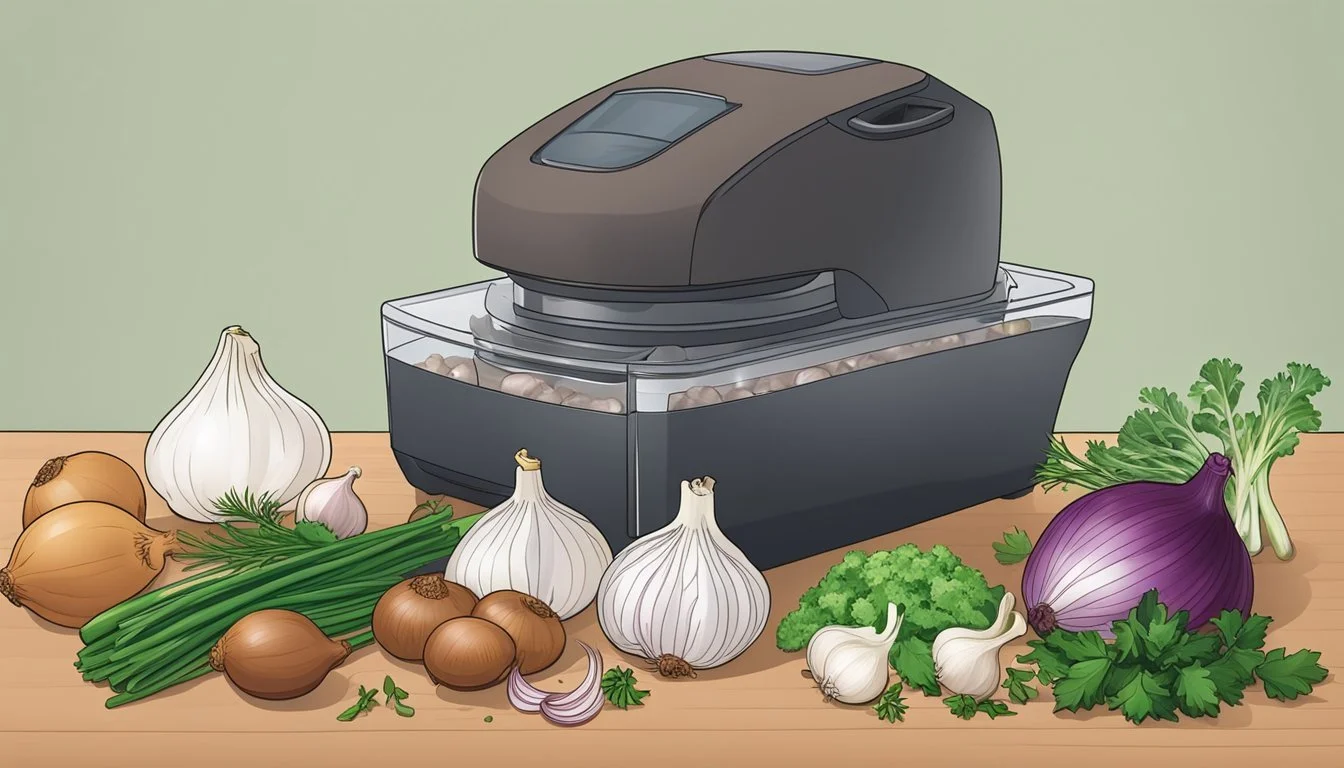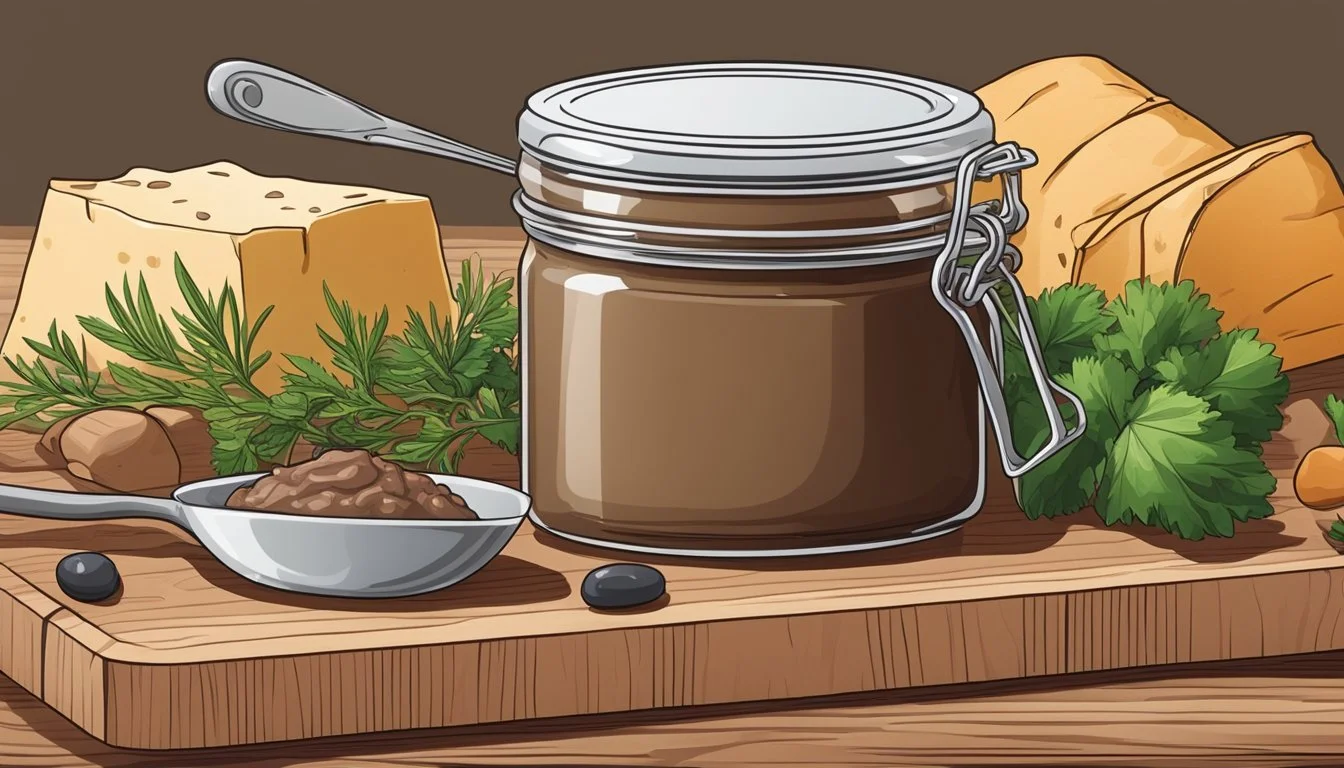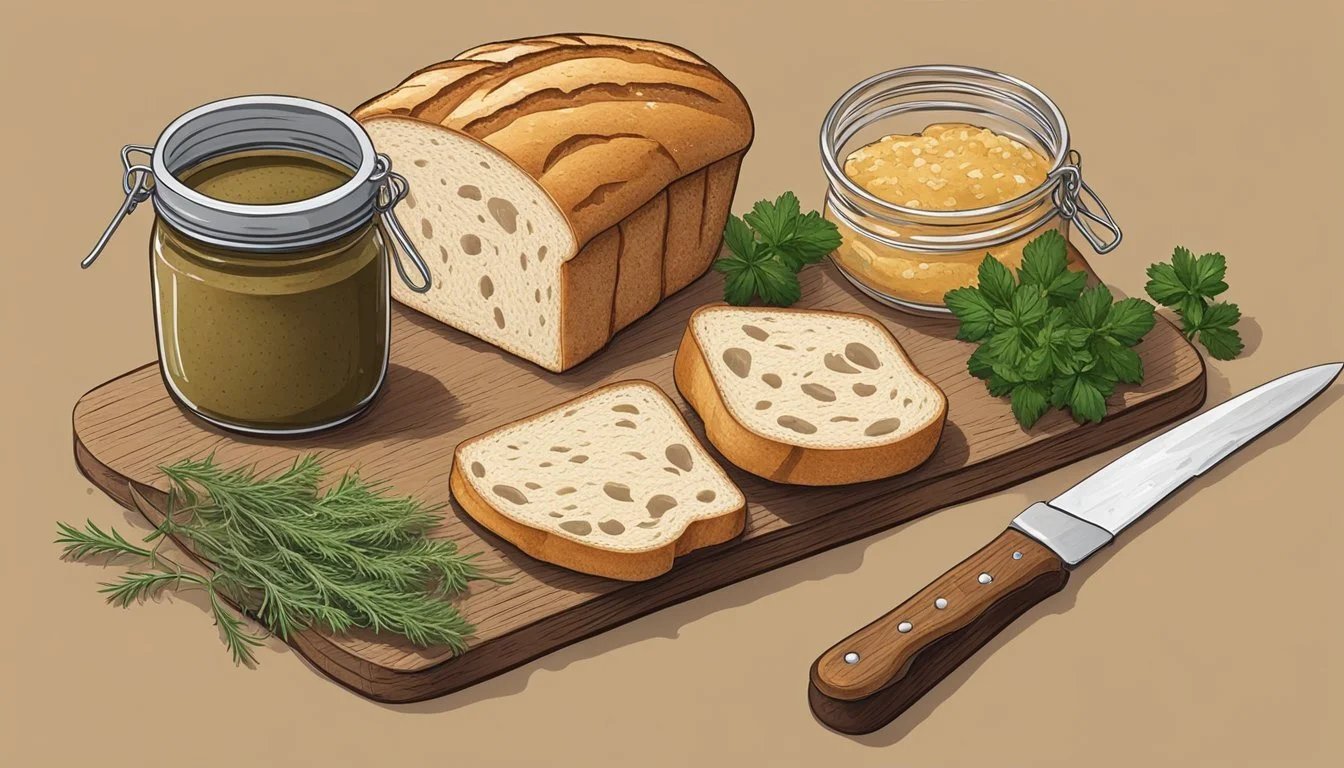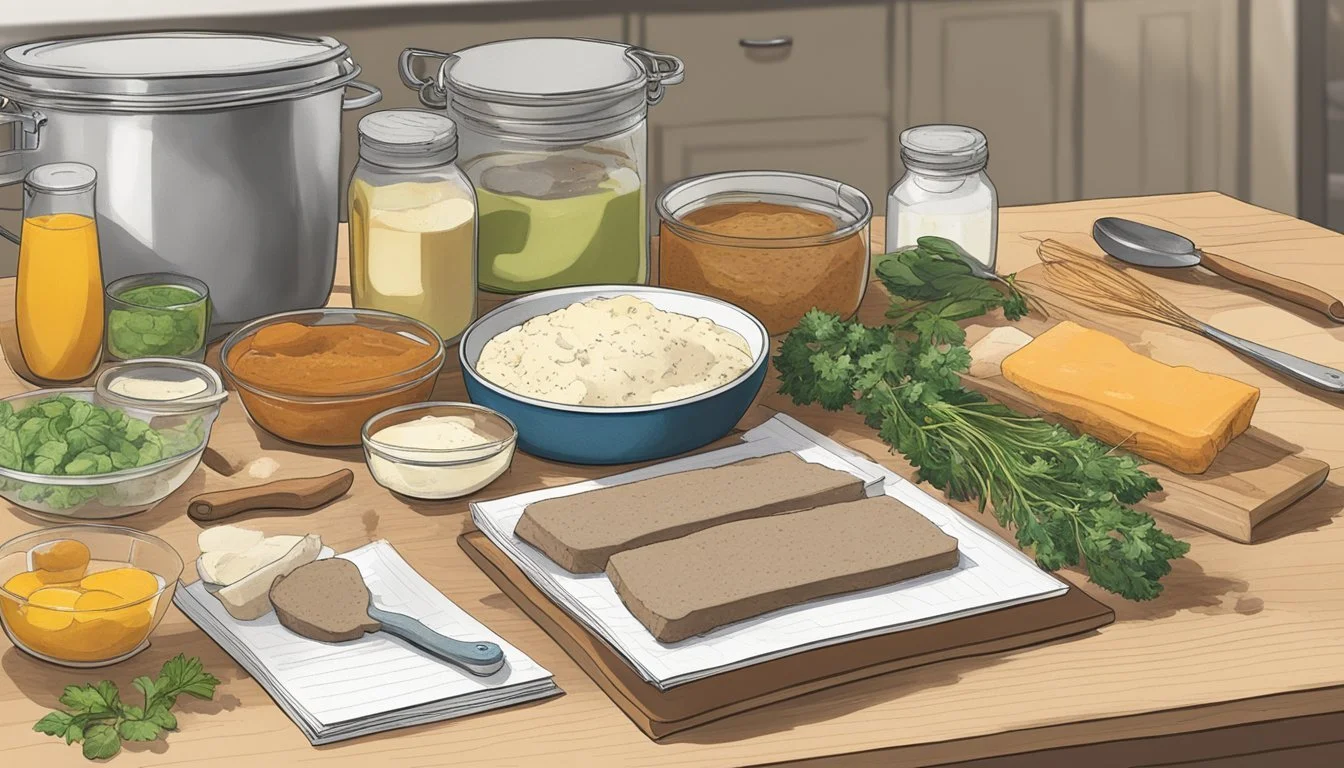Mastering the Art of Homemade Liver Pate
Easy Steps for First-Time Makers
Mastering the art of creating homemade liver pâté is a culinary endeavor that begins with understanding the basics of preparation and ingredients. Liver pâté, a smooth and rich spread popular in various cuisines around the world, is made primarily from liver, along with aromatic seasonings, fats, and often a touch of alcohol for depth of flavor. Essential to a successful pâté is the selection of high-quality liver, which can vary from chicken to beef or even duck, each imparting its own unique taste and texture to the dish.
The process of making liver pâté involves several critical steps from initial preparation to the final blending. Chefs start by preparing the liver, removing any membranes or connective tissues to ensure a smooth final product. Aromatics like onions, garlic, and herbs are typically sautéed to create a flavor base, complementing the natural taste of the liver. Attention to detail, such as whether to soak the liver or the extent of cooking it, can significantly influence both the texture and taste of the pâté.
Many recipes call for the liver and aromatics to be blended with butter or another type of fat to achieve the creamy consistency that is characteristic of a good pâté. Seasonings play a crucial role, and it's common to start with less salt and then add to taste, ensuring the perfect balance of flavors. Creating a homemade liver pâté is ultimately about blending technique, quality ingredients, and personal taste preferences into a harmonious dish that can be enjoyed in a variety of settings.
Essential Ingredients
Creating a delicious homemade liver pâté requires a careful selection of fresh ingredients. The liver, herbs, spices, and additional flavorings contribute to the richness and depth of this classic spread. Below is a breakdown of what one will need to gather before starting their pâté adventure.
Choosing Your Liver
The liver is the cornerstone of pâté and should be chosen with care. Options include:
Chicken liver: Mild in flavor and smooth in texture, ideal for beginners.
Beef liver: Richer and with a stronger taste, providing a hearty pâté.
Pork liver: A balance between chicken and beef in both taste and texture.
Regardless of type, the liver should be fresh, free of connective tissue, and properly cleaned.
Herbs and Spices
Herbs and spices are essential for adding complexity to the flavor. Must-haves include:
Rosemary: For a woody aroma.
Thyme: Lends a subtle earthiness.
Salt: Use sea salt flakes to enhance the overall taste.
Black pepper: Freshly ground to add a little heat.
Nutmeg: A pinch can add sweetness and warmth.
One's selection can make or break the pâté's flavor profile, so they should be used judiciously.
Additional Flavorings
Additional ingredients provide depth and richness:
Aromatics:
Onion: Caramelized to bring out sweetness.
Garlic: Adds a pungent kick.
Fats:
Butter: For creaminess and to sauté aromatics.
Olive oil: A healthier option that can be used in the mix or for frying.
Alcohol:
Cognac or brandy: Just a tablespoon can deepen the pâté's flavor.
These ingredients not only enhance the taste but also contribute to the pâté’s smooth texture. A balance between the proteins, vitamins, and minerals in the liver and the selected flavorings will yield a pâté that is both nutritious and delectable.
Equipment Needed
To ensure success in creating homemade liver pâté, one must gather the correct equipment. The right tools not only facilitate the preparation process but also have a significant impact on the quality of the final product.
Processing the Mixture
Food Processor or Blender:
A key piece of equipment is a food processor or a high-quality blender. This is essential for achieving the smooth texture that is characteristic of a fine pâté.
Food Processor – Ideal for effortlessly combining liver, aromatics, and other ingredients into a smooth consistency.
Blender – A viable alternative to a food processor, especially when working with smaller quantities.
Cooking Tools
Skillet or Frying Pan:
Sautéing the aromatics and cooking the liver requires a well-built skillet or frying pan, which will ensure even heat distribution and prevent burning.
Skillet – Preferably non-stick, for sautéing ingredients like onions, shallots, or garlic before blending.
Terrine:
For those wishing to shape their pâté traditionally, a terrine mold is used during the cooling process to form the pâté.
Terrine Mold – Usually a rectangular, ovenproof dish—often made of ceramic or cast iron—that is specifically designed for cooking and shaping pâté.
Preparation Techniques
Mastering homemade liver pâté hinges on meticulous preparation, precise cooking, and achieving the perfect texture. This section will guide the reader through the necessary steps, from prepping the liver to crafting a delicious base mixture, culminating in the cooking process that will define the quality of the pâté.
Cleaning and Prepping the Liver
The first step in pâté preparation is to handle the chicken or beef liver with care. The cook should clean the liver under cold water, pat it dry, and make sure to remove any connective tissue or green bile spots, which can impart a bitter flavor. Preparation time can vary, but this process is crucial for a smooth texture in the final product.
Creating the Base Mixture
An aromatic base mixture lays the foundation for a flavorful pâté. The cook should start by sautéing finely chopped onions, garlic, and herbs in butter until the onions are translucent. It is essential to sauté these base ingredients on medium heat to avoid burning them, as the base forms the backbone of the pâté's flavor profile.
Mastering the Cooking Process
The liver itself should be cooked with finesse. After the base mixture is ready, the liver is added to the pan to fry—approximately 2 minutes per side—until browned but not overcooked to retain a creamy texture. The addition of brandy or another spirit and a reduction of the liquid is necessary for concentrating the flavors. Once cooked, the ingredients are puréed in a food processor until smooth, resulting in a rich and velvety pâté. The cook time is brief, so it's important to monitor closely to avoid a grainy texture.
Assembling and Seasoning
Preparing liver pate begins with combining the cooked liver with other ingredients and meticulously seasoning the mixture. Proper blending and spicing ensure a creamy, delicious finish that elevates the dish from ordinary to exquisite.
Blending for Perfect Consistency
Once the liver and aromatics are browned and cooked through, they should be transferred to a food processor. Blending is key to achieving the silkiness that distinguishes a superior pate. To ensure a smooth consistency:
Add the cooked liver mixture to the processor.
Incorporate half the butter—usually room temperature for better integration.
Pulse until the liver is finely chopped.
Gradually add in the remaining butter and any additional ingredients such as heavy cream or softened cream cheese for a richer texture.
Blend continuously until the mixture is uniform and velvety.
Balancing Flavors
The right balance of seasoning brings out the nuances of the liver and complements its rich flavor.
Shallots and garlic, sautéed until translucent, lay a flavor foundation.
Herbs such as rosemary and parsley contribute earthiness and fresh notes.
Precise amounts of salt and freshly ground black pepper are crucial; start with a pinch of each and adjust to taste.
For instance, a user may add:
Herb/Spice Suggested Quantity Black Pepper 1/2 teaspoon Rosemary 1 teaspoon, chopped Parsley 2 tablespoons, finely chopped
They should fold in these elements gently to distribute the flavors evenly throughout the pate. The goal is to complement, not overpower, the primary liver flavor.
Nutritional Benefits
Liver pâté is a powerhouse of nutrition, often considered a superfood due to its dense concentration of essential nutrients. This homemade delicacy is particularly rich in iron, especially heme iron, which is easily absorbed by the body, making it highly effective in preventing anemia.
A significant source of vitamins, liver pâté supplies an abundance of vitamin A, crucial for maintaining healthy vision, immune functionality, and organ health. It also offers an impressive amount of vitamin B12, essential for brain health and the creation of red blood cells, and riboflavin (B2) which aids in energy production and the breakdown of fats and drugs.
Vitamin A: Necessary for eye health and immune function.
Vitamin B12: Supports nerve tissue health and red blood cell formation.
Riboflavin (B2): Key for energy production and cellular function.
Further replete with folate (B9), significant for DNA synthesis and repair, and copper, important for cardiovascular health and maintaining a robust immune system, liver pâté is an excellent addition to a nutrient-dense diet.
Nutrient Benefit Iron Prevents anemia; improves energy levels Vitamin A Enhances vision and immune health Vitamin B12 Crucial for neurological function Riboflavin Aids metabolism and cellular processes Folate (B9) Essential for genetic material formation Copper Supports heart health and immune defense Choline Vital for liver function and brain health
Liver pâté is also abundant in choline, an essential nutrient that maintains liver integrity and supports brain development. As a source of amino acids, it contributes to muscle building and repair, while staying relatively low in calories, which can be a healthy addition to various dietary preferences. Given the nutrient density and the healthful benefits it offers, liver pâté can be a nutritious component of one's meal plan.
Safe Storing Practices
Storing homemade liver pate properly is crucial to maintain its freshness and flavor. Specific techniques ensure pate remains safe to consume and delicious over time.
Refrigeration Tips
Proper refrigeration is essential for the shelf life of liver pate. After preparation, pate should be tightly wrapped in plastic wrap or placed in an airtight container to prevent exposure to air, which can accelerate spoilage. The pate then needs to be positioned in the coldest part of the refrigerator, typically at the back of a shelf, away from the door. This helps maintain a consistent temperature, keeping the pate fresh. One should also be mindful to:
Store away from strong-smelling foods to avoid flavor absorption.
Regularly inspect the pate for signs of spoilage, such as an off smell or mold.
Freezing and Long-Term Storage
For long-term storage, pate can be frozen, extending its lifespan for several months. To freeze pate, one should:
Wrap it in plastic, ensuring no air pockets remain.
Encase the wrapped pate in a layer of lard, which helps to block out air and prevent freezer burn.
Label the pate with the freezing date before placing it in the freezer.
To use frozen pate, it should be thawed in the refrigerator overnight, rather than at room temperature, to keep it safe from bacterial growth. Once thawed, consume the pate within a couple of days for the best quality.
Serving and Presentation Suggestions
Creating an impressive presentation enhances the enjoyment of homemade liver pâté. It’s not just about the rich, savory taste; how the pâté is served plays a critical role in setting the stage for a memorable appetizer experience.
Accompaniments
A well-composed charcuterie (What wine goes well with charcuterie?) board elevates liver pâté into a centerpiece. They should consider:
Bread: A crusty baguette or crostini serves as the perfect vessel for pâté. Slice the baguette thinly to ensure a crisp texture that contrasts with the creaminess of the pâté.
Crackers: Offer a selection of high-quality crackers in various shapes and textures. Opt for neutral flavors that complement rather than compete with the pâté.
Cheese: A variety of cheeses such as soft brie, aged cheddar, or creamy goat cheese can add depth and contrast.
Wine and Spirits: A bold red wine, such as a Merlot or Sauvignon Blanc, can match the richness of liver pâté. For a more unique pairing, they might serve cognac or bourbon as a sophisticated complement.
Plating for Appeal
When plating liver pâté, they should aim for a balance between elegance and simplicity:
Color and Texture: Using a dark or contrasting plate can make the pâté stand out. Adding a garnish of fresh herbs or edible flowers can add a pop of color.
Arrangement: Space the accompaniments evenly around the pâté, allowing guests to easily access all elements of the dish. If they are using a board, placing the pâté slightly off-center can create a visually appealing focal point.
By focusing on complementary accompaniments and visually pleasing plating, they can transform their liver pâté into an appetizer that’s as delightful to look at as it is to eat, perfect for any fancy dinner party.
Variations and Customizations
When creating liver pâté, one can explore a variety of ingredients to suit different dietary preferences or to experiment with flavors. This section will guide you through the use of alternative meats as well as options for vegetarian and vegan variations.
Alternative Meats and Flavors
For those looking to try different types of liver, chicken livers are a popular choice due to their milder flavor compared to beef liver. Pork liver is also used, often seen in traditional recipes. Incorporating different meats like veal or pork can add unique tastes and textures to your pâté. Adding bacon to the mix can impart a smoky depth, while using ghee instead of butter can offer a richer, nuttier undertone.
Meat Options:
Chicken Livers: milder flavor, smooth in texture.
Pork Liver: stronger flavor, commonly used in traditional recipes.
Veal: delicate taste, pairs well with subtle seasoning.
Pork: can be used to provide a distinctive taste profile.
Flavor Enhancers:
Bacon: adds smokiness and depth.
Ghee: provides a rich, nutty flavor as an alternative to butter.
Vegetarian and Vegan Options
Although traditional pâté is made with liver, vegetarian and vegan versions often utilize a blend of vegetables and other non-animal components to mimic the creamy texture of the original dish. When making a vegetarian pâté, one might utilize ingredients such as mushrooms, which have a meaty texture, or blend nuts and beans to achieve the desired consistency. Using umami-rich ingredients like soy sauce or miso paste can add a depth of flavor that replaces the richness typically provided by meat.
Vegetarian Ingredients:
Mushrooms: provide a meaty texture and rich flavor.
Beans and nuts: blended to mimic traditional pâté's creaminess.
Flavor Enhancers for Vegan Options:
Soy sauce or miso paste: for umami-rich depth.
Nutritional yeast: for a cheese-like flavor dimension.
By understanding these variations and customizations, chefs can create a pâté that honors personal taste and dietary requirements, while still delivering the classic, rich flavors associated with this traditional dish.
Advanced Techniques and Tips
In this section, we’ll explore how to elevate the texture and flavor of homemade liver pâté, as well as how to apply professional finishing touches that can turn a good pâté into a great one.
Enhancing Texture and Flavor
To enhance the texture and flavor of liver pâté, chefs should consider the quality of their ingredients and the specific preparation methods they use.
Ingredients:
Foie gras: Incorporating foie gras can create a silkier, richer pâté.
Spices: A pinch of cayenne adds a subtle warmth, while nutmeg or ground nutmeg can introduce a nuanced depth.
Herbs: Fresh rosemary, finely chopped, imparts an aromatic earthiness.
Preparation Techniques:
For a smoother texture, ensure that all sinews are meticulously removed before blending.
Some chefs lightly smoke the liver for a robust flavor; this should be done delicately to avoid overpowering the pâté.
Madeira or a similar wine, added during cooking, can deepen the pâté's taste profile.
Professional Finishing Touches
Once the liver pâté is blended and ready, applying the right finishing touches is crucial for both presentation and taste.
Mustard: A high-quality mustard on the side not only complements the pâté but also adds a refined aesthetic.
Texture Contrast:
For the pâté itself, chilling is critical. A well-chilled pâté can be sliced cleanly, offering a pleasing texture.
A sprinkle of coarse sea salt on top just before serving can also provide a pleasant crunch.
By focusing on the quality of ingredients and the precision of the preparation method, one can craft a truly outstanding liver pâté. The addition of sophisticated spices, careful attention to texture, and thoughtful garnishes are what differentiate a novice from a connoisseur in the art of pâté making.
Recipe Compilation and Execution
When one sets out to craft a homemade liver pâté, gathering a well-curated list of ingredients is critical. Here's what they will need for a standard liver pâté recipe:
Pork liver: The star organ meat, known for its rich texture and flavor.
Carrot: Adds a hint of sweetness.
Unsalted butter: For depth and creamy consistency.
White or red wine: For deglazing and infusing the pâté with complexity.
Rice: Sometimes added to bind the ingredients.
Total time can vary, but one should allocate approximately two hours to prepare and cook.
Preparation Steps:
Clean the Liver: They must start by trimming the liver of membranes.
Sauté Aromatics: In a pan, they should melt unsalted butter and cook chopped carrot until soft.
Cook Liver: Add the liver to the pan and sear it. Once browned, they can deglaze with white or red wine.
Blend: Transfer the cooked ingredients to a food processor, pulsing until smooth.
Cooking Instructions:
First Phase: On medium-high, cook aromatics in unsalted butter.
Second Phase: They will add the liver, cooking it thoroughly before deglazing.
Final Phase: Let the mixture cool, then rice can be added if used, before blending.
Crafting liver pâté requires attention to detail — they mustn't rush the process, giving each flavor time to meld. When executed with care, the result is a sumptuous, rich spread suitable for a range of culinary applications.





